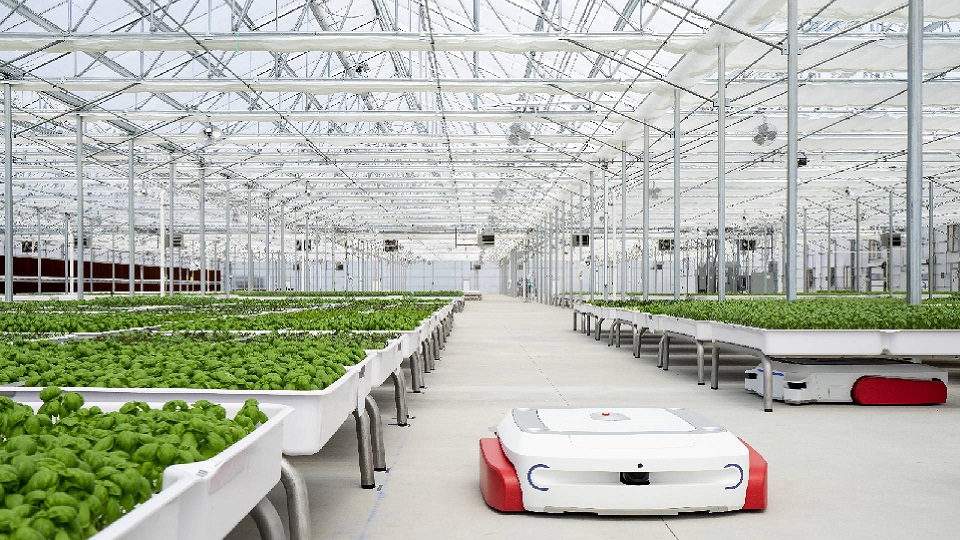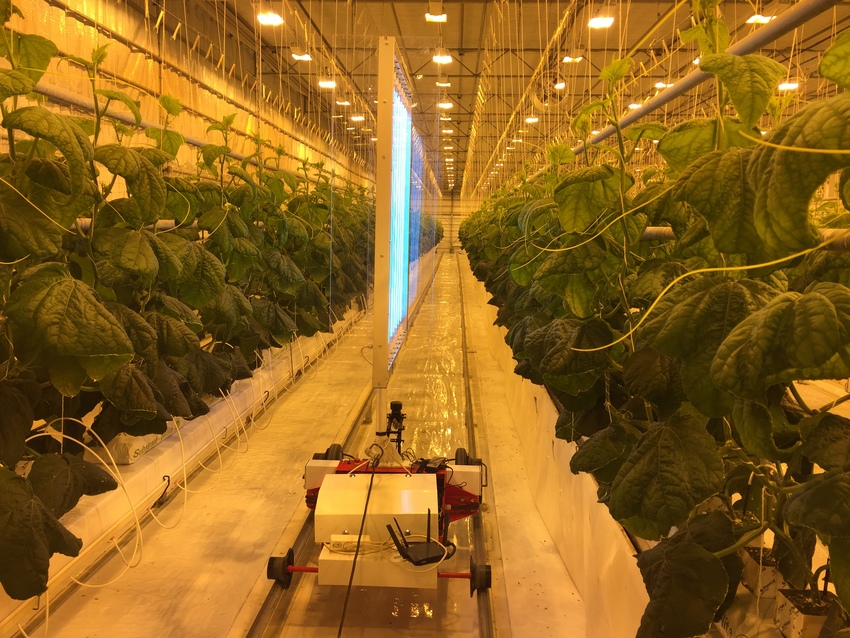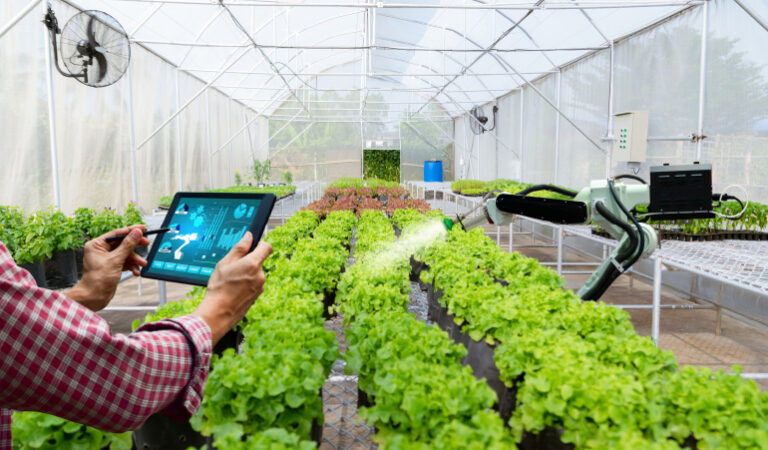Various companies specialize in greenhouse automation, providing innovative solutions for efficient and optimized horticultural practices. Priva and HortiMaX offer comprehensive automation technologies encompassing climate control, irrigation management, and crop monitoring systems.
Argus Controls focuses on sophisticated control systems for horticulture, emphasizing climate regulation, irrigation, and environmental monitoring within greenhouses. Additionally, Richel Group and Hoogendoorn Growth Management provide greenhouse automation technologies covering climate control, irrigation solutions, and data-driven decision-making tools. Other players like Lumigrow, Motorleaf, Autogrow, and
Heliospectra contribute advanced lighting, AI-driven predictive analytics, control systems, and smart horticultural lighting solutions to enhance greenhouse operations. Moreover, companies such as AmpleHarvest concentrate on sustainable agriculture by offering automation tools and technologies for efficient greenhouse management and food production.
What optimizes plant growth in Greenhouse Climate Control?

These various aspects of greenhouse automation collectively contribute to enhancing crop quality, optimizing resource utilization, reducing labor costs, and improving overall productivity in controlled agricultural environments.
Climate Control Systems
Temperature Regulation
Utilization of temperature sensors and controllers to maintain optimal temperatures for plant growth. Implementation of heating and cooling systems such as heaters, fans, evaporative cooling, and shading systems.
Integration of automated mechanisms to regulate temperature fluctuations based on external weather conditions and internal greenhouse settings.
Humidity Control
Use of humidity sensors and controllers to manage moisture levels within the greenhouse environment.
Employing misting systems, humidifiers, or dehumidifiers to maintain appropriate humidity for different plant species.
Integration of fogging systems to control humidity levels and create favorable growing conditions.
Ventilation Systems
Installation of automated vents, louvers, or windows to regulate airflow and maintain optimal air circulation. Use of exhaust fans and circulation fans to prevent the buildup of excess heat, CO2, and humidity.
Integration of automated systems that adjust ventilation based on temperature, humidity, and CO2 levels for optimal plant growth.
Irrigation and Water Management
Automated Watering Systems
Utilization of drip irrigation, sprinkler systems, or hydroponic systems that are automated and programmable. Incorporation of sensors to monitor soil moisture levels and deliver precise amounts of water to plants.
Implementation of smart irrigation controllers that adjust watering schedules based on environmental conditions and plant needs.
Nutrient Delivery Systems
Employment of automated nutrient dosing systems that deliver specific nutrients to plants in hydroponic or soil-based systems. Integration of fertilization systems that control the release of nutrients based on plant growth stages and requirements. Use of fertigation systems combining irrigation and fertilization for efficient nutrient delivery.
Monitoring Soil Moisture Levels
Deployment of soil moisture sensors at different depths to track water levels and prevent over or under-watering.
Utilization of data collected from sensors to optimize irrigation schedules and conserve water while ensuring plant health.
Integration of wireless technologies for real-time monitoring and remote access to soil moisture data.
Crop Monitoring and Management
Sensors for Plant Health
Use of various sensors (e.g., spectrometers, chlorophyll meters, or thermal imaging) to monitor plant health indicators such as nutrient levels, chlorophyll content, and stress responses.
Integration of imaging technologies for early detection of diseases, nutrient deficiencies, or pest infestations.
Automated Pest Control
Implementation of pest monitoring systems like pheromone traps, cameras, or sensors to detect and identify pests. Integration of automated pest control methods such as biological controls, pheromone-based pest management, or targeted spraying using robotics. Use of predictive models based on data analytics to anticipate and prevent pest outbreaks.
Data Analytics for Crop Optimization
Collection and analysis of data from various sensors and monitoring systems to optimize growing conditions.
Implementation of machine learning algorithms to process data and make informed decisions for crop management.
Utilization of predictive analytics to forecast yields, optimize resource allocation, and improve overall crop performance.
Labor-Saving Technologies
Robotic Systems for Planting and Harvesting
Integration of robotics and automation for tasks like seed planting, transplanting, pruning, and harvesting.
Implementation of robotic arms, grippers, and vision systems for precise and efficient
handling of plants.
Utilization of autonomous vehicles or drones for crop monitoring, spraying, and data collection.
Automated Sorting and Packing Machinery
Employment of sorting machines equipped with optical sensors and computer vision technology to grade and sort harvested produce.Integration of packing machinery for automated packaging and labeling of crops.
Implementation of conveyor systems and robotics to streamline the sorting and packing processes, reducing manual labor and improving efficiency.
How do top Greenhouse Automation Companies innovate?

Top Greenhouse Automation Companies innovate through continual research, developing advanced technologies for climate control, irrigation, monitoring, and labor-saving devices. They integrate AI, refine sustainable practices, and enhance accessibility, aiming to improve efficiency and sustainability in agriculture.
Research and Development (R&D)
These companies invest significantly in R&D efforts to explore new technologies and improve existing solutions for greenhouse automation.
They conduct thorough research into areas such as climate control, irrigation systems, crop monitoring, and robotics to enhance precision and efficiency.
Advanced Technologies
These companies develop and implement cutting-edge technologies that optimize various aspects of greenhouse operations.
Integration of AI, machine learning, and data analytics allows for intelligent decision-making and automation adjustments based on real-time data.
Sustainability Focus
There’s a growing emphasis on sustainability within innovation, aiming to reduce environmental impact and resource consumption.
Companies develop eco-friendly solutions, such as energy-efficient systems, water-saving technologies, and sustainable pest management practices.
Accessibility and Affordability
Top companies focus on making their automation solutions accessible to a wide range of growers, from small-scale to large commercial operations.
They design user-friendly interfaces and offer scalable, modular solutions to accommodate various needs and budgets.
Collaboration and Partnerships
Collaboration with agricultural experts, research institutions, and technology partners helps these companies stay at the forefront of innovation.
Partnerships facilitate knowledge exchange, validation of technologies, and the integration of diverse expertise to drive innovation forward.
Customer-Centric Approach
These companies actively engage with their customers to understand their needs and challenges, incorporating feedback into product development.
Customization of solutions and continuous support services ensure that the offered technologies meet the specific requirements of growers.
How does AI influence sustainable Greenhouse Automation?
AI plays a pivotal role in shaping sustainable Greenhouse Automation through its multifaceted contributions. Firstly, AI-driven analysis and processing of data sourced from sensors, weather forecasts, and historical patterns enable optimal resource utilization. By precisely managing factors like irrigation, lighting, and climate, AI minimizes resource waste, ensuring water, energy, and nutrients are used efficiently, thus contributing significantly to sustainability efforts.
Moreover, the predictive analytics capabilities of AI are instrumental in precision management within greenhouse environments. Through forecasting crop needs, pest outbreaks, and environmental changes, AI facilitates proactive interventions. This approach reduces dependency on chemical treatments, minimizes environmental impact, and maintains healthy crop growth by addressing potential issues before they escalate.
Another significant aspect is AI’s role in promoting energy-efficient operations within greenhouses. By dynamically adjusting heating, cooling, and lighting systems based on real-time conditions and plant requirements, AI optimizes energy usage. Incorporating renewable energy sources further supports sustainable energy practices in greenhouse operations.
Additionally, AI’s analysis of plant health data aids in early detection of diseases, nutrient deficiencies, or stress factors. By promptly identifying issues and making precise adjustments, AI contributes to healthier plants, increased yields, and improved crop quality without excessive resource consumption.
Lastly, AI’s adaptive nature allows for automated adjustments in various systems like irrigation, ventilation, and pest control. This adaptability ensures that optimal conditions for plant growth are maintained while conserving resources. Overall, AI’s capability to process extensive data, make informed decisions, and adapt in real-time significantly fosters sustainable Greenhouse Automation, promoting resource efficiency, reducing environmental impact, and enhancing productivity in controlled agricultural settings.
FAQ’s
What is the top 1 greenhouse gas?
Carbon dioxide (CO2) is considered the primary greenhouse gas responsible for the most significant contribution to global warming and climate change.
How many companies use greenhouses?
Numerous companies across various industries utilize greenhouses for agricultural purposes, ranging from small-scale operations to large commercial entities.
How big is a greenhouse company?
The size of a greenhouse company can vary significantly, from small-scale local businesses to multinational corporations with extensive global operations, depending on their scope and market reach.
Which company uses a greenhouse?
Many companies in the agriculture and horticulture sectors use greenhouses for cultivating plants, including companies specializing in fruits, vegetables, flowers, and nurseries.
What are the top 7 greenhouse gasses?
The seven primary greenhouse gasses include carbon dioxide (CO2), methane (CH4), nitrous oxide (N2O), hydrofluorocarbons (HFCs), perfluorocarbons (PFCs), sulfur hexafluoride (SF6), and nitrogen trifluoride (NF3).
Which country has the lowest greenhouse gas emissions?
There isn’t a single country with the lowest greenhouse gas emissions as emission levels vary across nations.
Final Words
In conclusion, greenhouse automation is revolutionizing agriculture by using advanced technologies to create better conditions for plant growth. Companies are developing smart systems that control temperature, water, and nutrients, helping plants grow healthier and stronger. They’re also using robots and AI to do tasks like planting and harvesting, making farming more efficient.
Greenhouse automation is not only helping farmers produce more food but also doing it in ways that save resources and protect the environment. This technology is shaping the future of farming, making it more productive and sustainable for generations to come.

